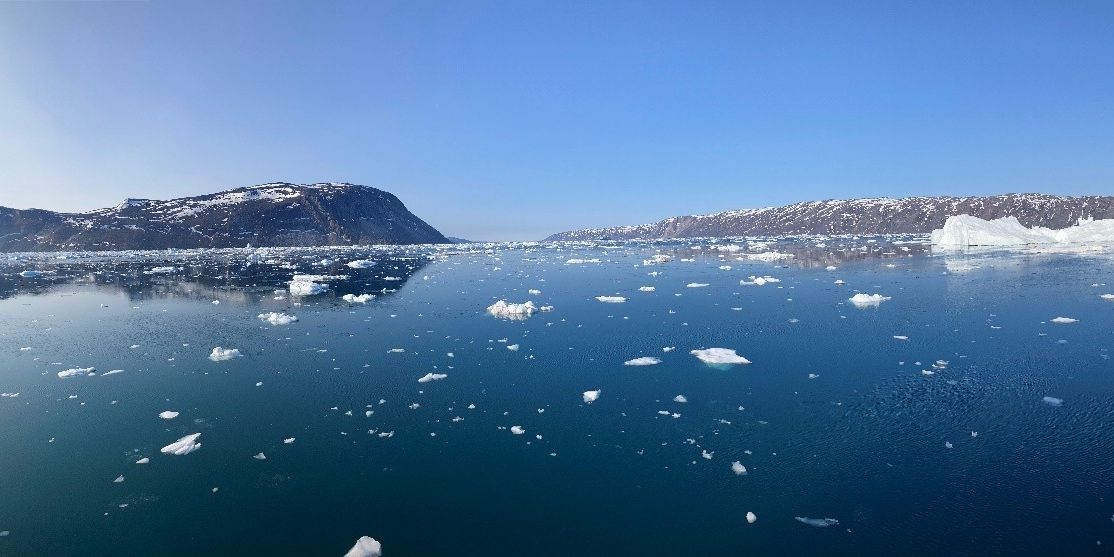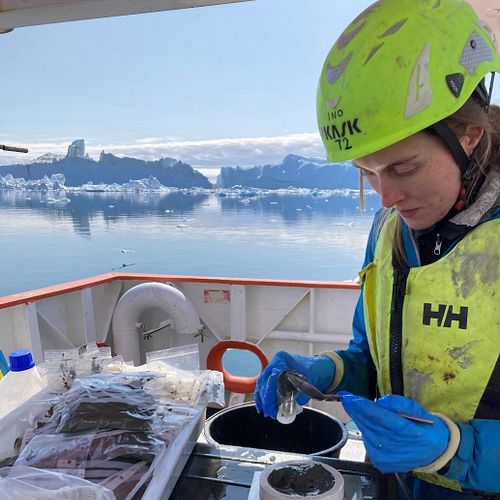1. juli 2025 nyhet
On June 14th, Akvaplan-nivaist Amanda Ziegler embarked on a 10-day long cruise aboard the RV Sanna from Aasiaat to Sisimiut, Greenland. The cruise, organized by collaborators at Århus University in Denmark, aimed to sample 2 fjords in Western Greenland; Disko fjord and Eqi fjord. The 8 scientists aboard characterized water column properties, collected zooplankton, sediments, and the surrounding intertidal coast. The work Amanda conducted on the cruise contributes to the EU project Polar Ocean Mitigation Potential (POMP) which aims to advance the current understanding of climate change impacts on polar ecosystem carbon sinks and biodiversity, with a focus on the capacity of these ecosystems to mitigate increasing atmospheric CO2 concentrations.
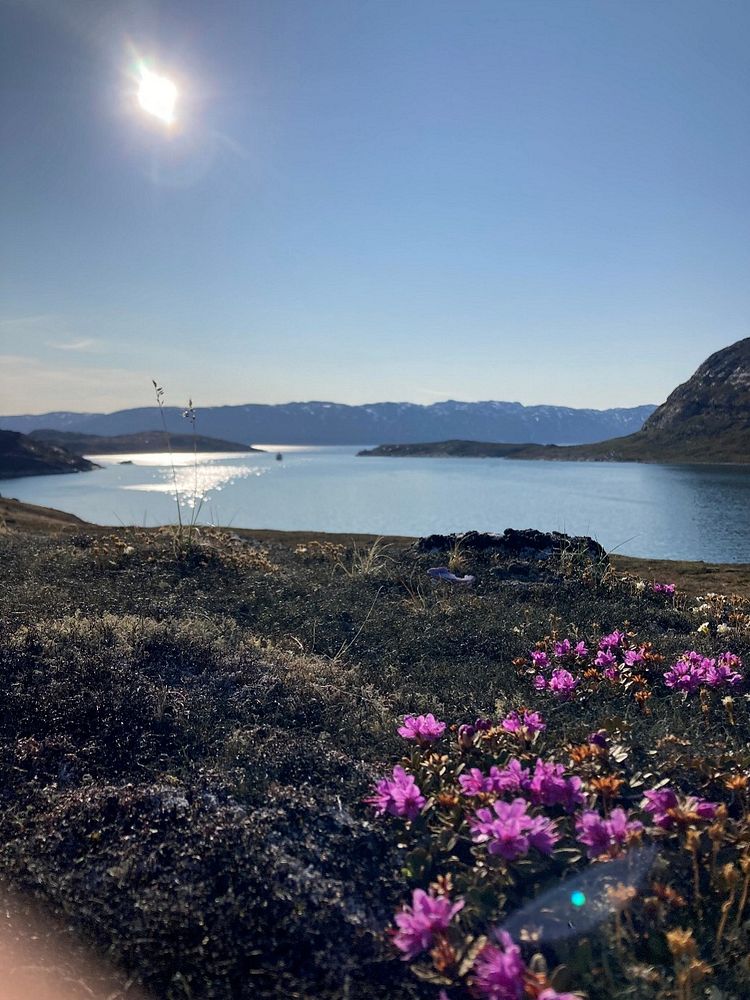
The view from ashore inside a bay north of Ilulisaat with RV Sanna anchored in the distance. Photo: Amanda Ziegler
Fjord ecosystems can be important carbon sinks with great potential for carbon sequestration due to their high seasonal productivity and rapid sediment accumulation rates. Organic matter from land or produced in situ can be rapidly buried in the seafloor. If this carbon remains in the sediments for a long time, it can be sequestered – it will not make contact with the atmosphere for thousands of years. However, the actual amount of carbon buried and sequestered in the seafloor also depends on the feeding and burrowing activities of the sediment community. Animals living in the sediments, like worms and small crustaceans, consume organic carbon (sinking phytoplankton, fecal pellets, kelp detritus) and gain energy through respiration – this process consumes oxygen and releases carbon dioxide back into the water and potentially into the atmosphere. When animals burrow in the sediment, previously buried organic carbon may be moved back to the sediment surface where it is exposed to oxygen and remineralized more quickly by animals and bacteria. Therefore, understanding how much respiration occurs in the sediment and how additions of organic matter affect this rate is important for understanding the carbon sequestration potential in the Arctic.
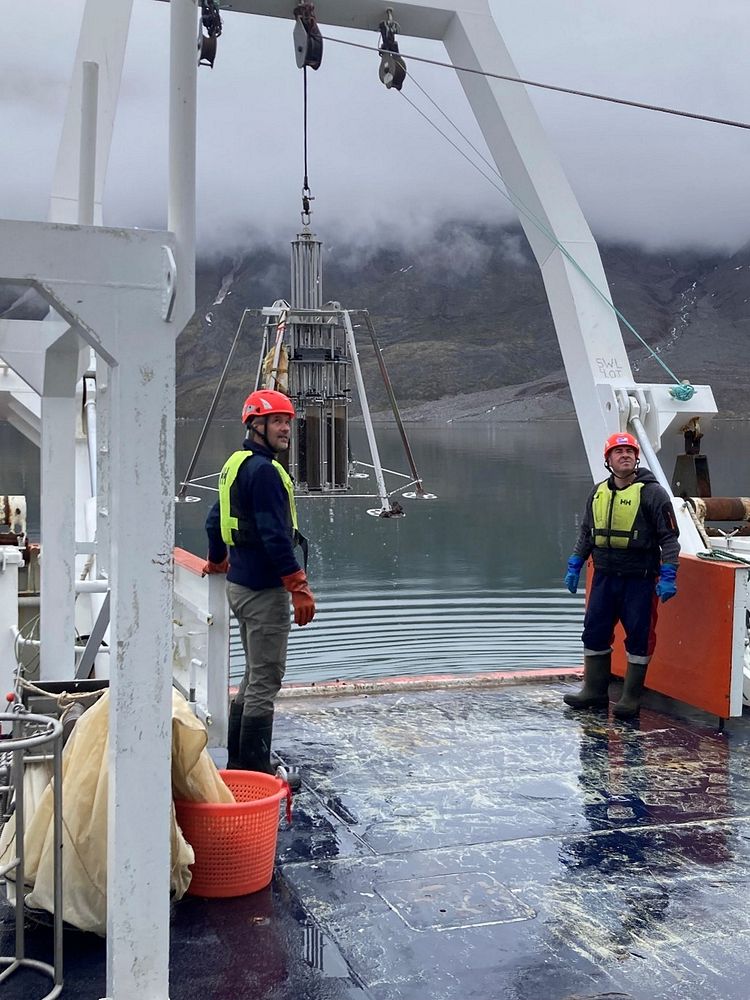
The multicorer bringing sediment cores to the ship in Disko Fjord. Chief scientist and collaborator Mikael Sejr (Aarhus University) on left. Photo: Amanda Ziegler
To measure the respiration of the seafloor community, Amanda collected seafloor sediment cores using a multicorer and incubated these in a cold room for approximately 24 hours. The concentration of oxygen was measured to determine the respiration rate which will later be related to the rate of carbon remineralization. In a subset of incubations, Amanda also added phytoplankton and kelp to the sediment cores to measure the difference in remineralization rate between these organic matter types and at different sites within the fjords in Greenland. It is hypothesized that remineralization of phytoplankton detritus occurs more quickly than of kelp, which may becoming more abundant across the Arctic as climate warming continues. In future, this study will also be conducted in different habitats across the Arctic including river delta systems on Svalbard and Northern Norway, and the coast of Arctic Canada.
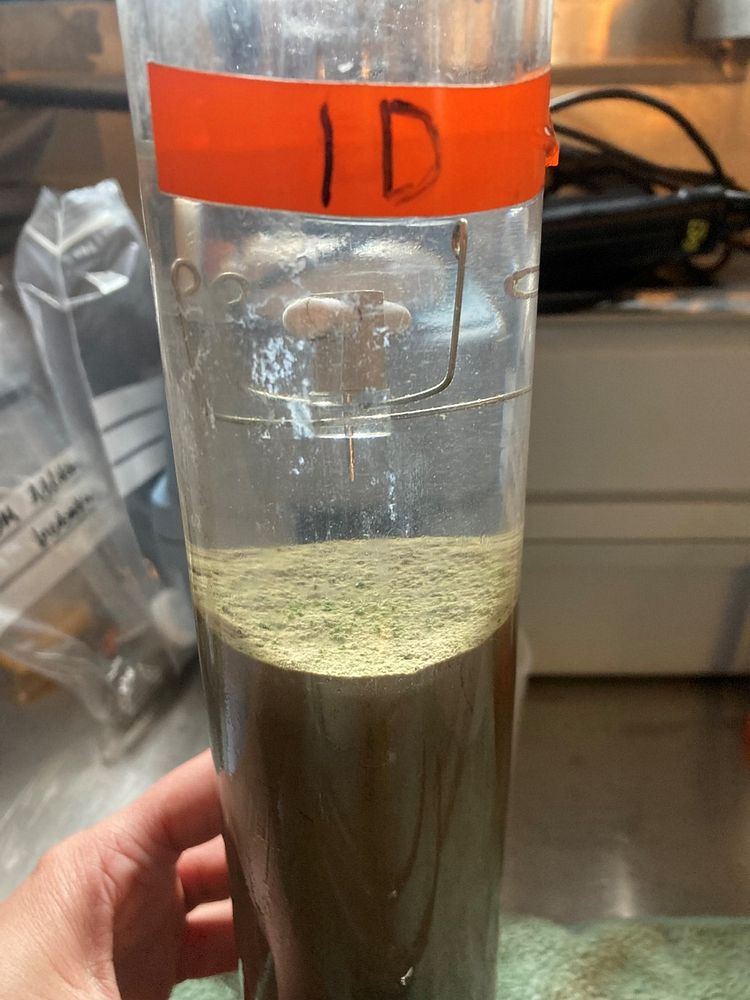
Close up view of a sediment core to which phytoplankton has been added and incubated for 24 hours. Photo: Amanda Ziegler
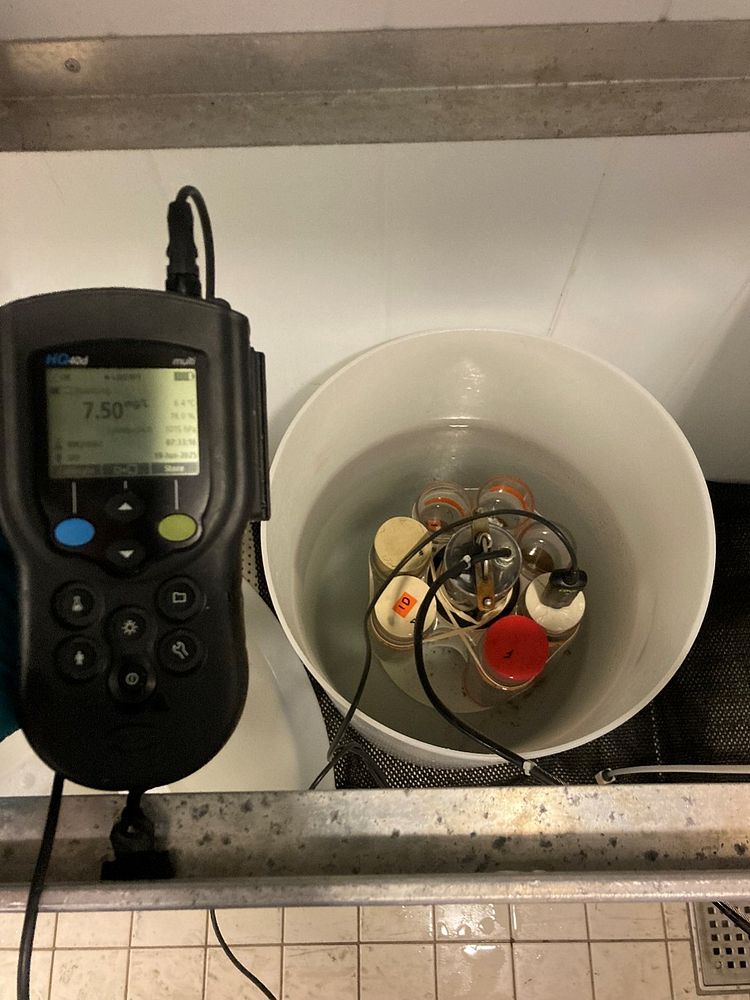
Small sediment cores incubating inside a water bath. Probe on the left side is measuring oxygen inside a core. Open cores are acclimating prior to being sealed. Photo: Amanda Ziegler
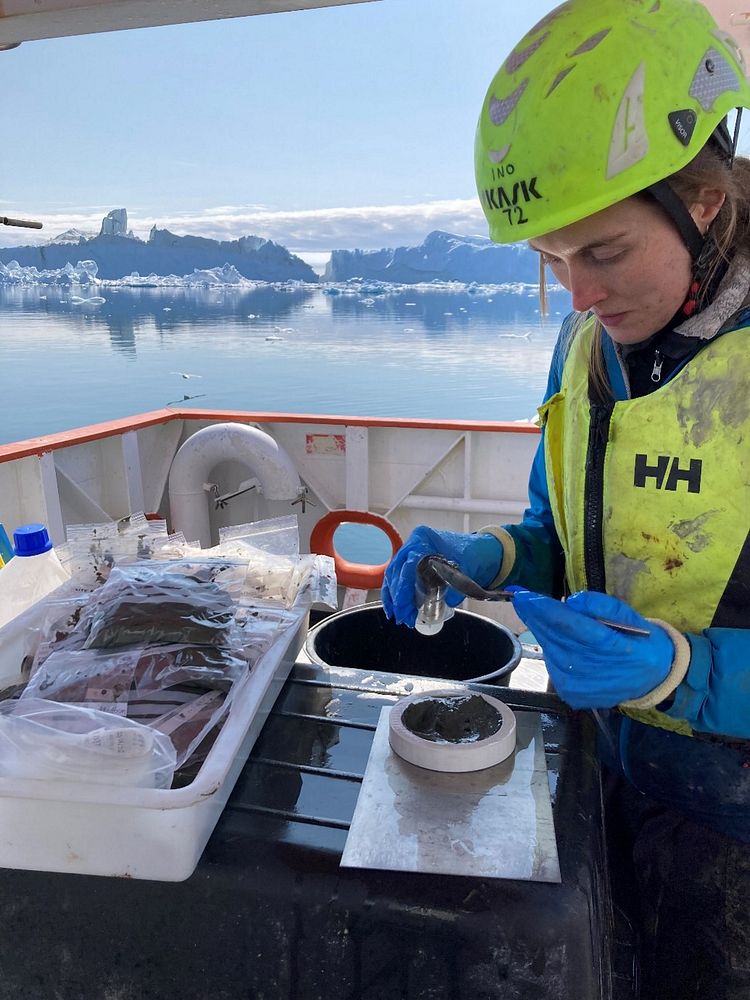
This field mission is part of the POMP project (Polar Ocean Mitigation Potential)The project is led by the University of Aarhus and financed by HORIZON-RIA.
Read more here: https://akvaplan.no/no/prosjek...
